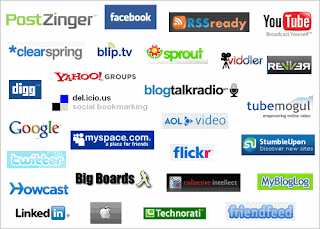We have provided assignment help for all subjects. Recently we write the assignment related to leadership. In this assignment writing, we provided the detail of leadership explanation would you offer to show how the style approach works, situations do you think leaders need to be more task oriented . We also following discuss in this paper : Identify and discuss the three-skills approach and provide one workplace example where they can be very successful in a leadership process and also explain the Blake and Mouton's leadership Style in what situations are the different styles best.
 According to the Style approach, leader works by managing team, complying authority, managing country club and impoverishing management. In other words, the approach would work, when the leaders apply their behavior as per the demands of the situation (Northouse, 2009). For example, in one classroom, a teacher comes, directly explains syllabus to the students and concludes the class. In another class, second teacher comes, first tries to develop understanding among the students about each other by knowing their names and then explains the topic to students.
According to the Style approach, leader works by managing team, complying authority, managing country club and impoverishing management. In other words, the approach would work, when the leaders apply their behavior as per the demands of the situation (Northouse, 2009). For example, in one classroom, a teacher comes, directly explains syllabus to the students and concludes the class. In another class, second teacher comes, first tries to develop understanding among the students about each other by knowing their names and then explains the topic to students.
In first situation, task oriented behavior is shown by the teachers and in another situation, relationship oriented behavior is exhibited by the teacher. After knowing the difference in the styles of teaching, both teachers can change their behavior to get better results. Leaders need to be task oriented, when there is requirement to explain the task related aspects to the followers. For example, to explain senior people, task oriented behavior should be shown by the leaders. On the other hand, leaders need to be relationship oriented, where relationship building with followers is needed. For example, to address the topics to newcomers or fresher, relationship oriented behavior should be followed by the leaders.
Three Skills-Approaches
There are three skills approach such as: technical, human and conceptual skills. These three skills approach are discussed as below:
Technical Skills: It means having the knowledge about and being proficient in specific type of work or activity. It also refers to capabilities to use appropriate tools and techniques (Rekabdar & Soleymani, 2010).
Human skills: It means having the capabilities and knowledge about and being able to work with other people.
Conceptual skills: These are the skills that leaders must have to think and to conceptualize about abstract and complex situations (Arkın, 2004).
For instance, to successfully implement the ERP system in a business organization, an individual/leader will need technical, human and conceptual skills. Without the knowledge of these skills, he/she cannot successfully implement the ERP system in the organization.
Basically, new skills-based model of organizational leadership involves competencies, individual attributes, leadership outcomes, career experiences and environmental influences. Individual attributes element deals with general cognitive abilities, motivation and personality (Dong & Naghdy, 2007). In contrast, Competencies includes problem solving skills and social judgment skills. Leadership outcomes include performance and effective problem solving skills. So, in this manner, the new skills-based model of organizational leadership extends the knowledge of the three-skill approach (Rekabdar & Soleymani, 2010).
Blake and Mouton's leadership Style
Country club leadership
This style of leadership is used to increase the work performance of the employees. Leader has a high concern for the people, but a low concern on the production. The leader probably supposes that the member of team will work hard if they feel happy & secure in the organization. Lack of direct supervision & control is problem with this style (Arvonen & Pettersson, 2002).
Middle of the Road Leadership
This leadership style has a high concern with both production and people. So, this style is used to increase the productivity of the employees. This creates an atmosphere of team spirit, where each team member is highly motivated and satisfied, which commits the worker to work hard. But, this style requires high effort of leaders (Fey, Adaeva, Vitkovskaia, 2001).
Middle of the Road Leadership
In this style of leadership, a leader tries to balance between the need of the workers and goals of the company. Balance attained by this style is its advantage. Disadvantage is that neither the production nor the people needs are fully met.
Impoverished Leadership
This is an ineffective style, because the leader does not create efficient system or rules to structure work process to the workers and not create motivated or satisfied work environment (Fey, Adaeva, Vitkovskaia, 2001).
References
Arkın, F. (2004). Programme evaluation: Skill-based language teaching approach in EFL. Procedia - Social and Behavioral Sciences, 2, 3339-3350
Arvonen, J. & Pettersson, P. (2002). Leadership behaviours as predictors of cost and change effectiveness. Scandinavian Journal of Management, 18, 101-112.
Dong, S. & Naghdy, F. (2007). Application of hidden Markov model to acquisition of manipulation skills from haptic rendered virtual environment. Robotics and Computer-Integrated Manufacturing, 23, 351-360.
Fey, C. F., Adaeva, M., Vitkovskaia, A. (2001). Developing a model of leadership styles: what works best in Russia? International Business Review, 10, 615-643.
Northouse, P.G. (2009). Leadership: Theory and Practice. (5th edn). USA: SAGE.
Rekabdar, G. & Soleymani, B. (2010). Comparison of Basic Mathematic Skills between Students with Different Studying Approaches. Procedia - Social and Behavioral Sciences, 8, 213-218.
 1. EditFlow
1. EditFlow 2. TweetReach
2. TweetReach 3. ArgyleSocial
3. ArgyleSocial 4. HootSuite for iPad
4. HootSuite for iPad 5. TweetLevel
5. TweetLevel 6. ReFollow
6. ReFollow 7. TwitterSearch
7. TwitterSearch 8. Traackr
8. Traackr 9. SocMetrics
9. SocMetrics 10. Social Scope
10. Social Scope










































